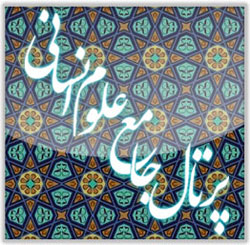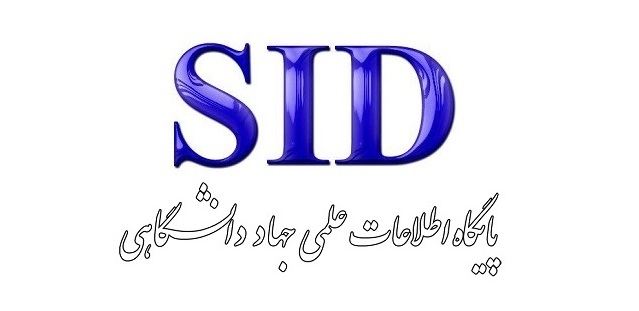Examining Metaphorical Allusion and Its Role in the Aesthetic Enrichment of Language in the Divan of Kamal Khujandi
Keywords:
Kamal Khujandi, Divan of Poems, Expression, Metaphorical Allusion, Rhetorical Figures, SimileAbstract
Art, including literature, constitutes an indirect and artistic mode of expression, and poets and writers employ various devices to achieve this objective—one such device being kināyah (metaphorical allusion). Kināyah, while inherently indirect and artistic, is also one of the most prominent techniques for aesthetic enhancement in language, and it is born and nurtured within the cultural and customary context of the society in which it emerges. One of the distinctive features of Kamal Khujandi’s ghazals is that, within the mirror of his verse, occasional reflections of folk literature and beliefs—such as proverbs, allusions, idiomatic expressions, and collective cultural assumptions—are manifest. He has effectively utilized such elements to articulate his poetic thoughts. This characteristic contributes to the vividness and chromatic diversity of his poetry. One of the primary literary tools employed by Kamal Khujandi is kināyah. The present study investigates metaphorical allusions and their role in the aestheticization of language within the Divan of Kamal Khujandi. Conducted as a theoretical study using a library-based research method, the investigation explores kināyāt (plural of kināyah) in Kamal Khujandi’s Divan with the aim of demonstrating the significance of allusions and their role in beautifying language in the context of the Iraqi style of Persian poetry. The study applies both analytical and descriptive methodologies. It was observed that a significant number of the kināyāt employed by the poet involve the use of human body parts in their structure. Furthermore, in employing kināyāt in his poetry, the poet has paid close attention to rhetorical figures, with ihām (pun), tanāsob (semantic harmony), takrār (repetition), and jinās (paronomasia) being the most salient. Additionally, in some of his metaphorical allusions, the poet has utilized elements traditionally associated with tashbīh (simile). Therefore, it can be concluded that Kamal Khujandi was deeply aware of the role of metaphorical allusion in the creation of aesthetic beauty and made effective use of this literary device to express his thoughts, emotions, and poetic sentiments. His deliberate integration of metaphorical phrases with similes and other literary techniques reflects his mastery and artistic sophistication.
Downloads
References
1. Grice WJ. Literature and Its Reflection: Agah Publications; 1984.
2. Shafii Kadkani MR. Periods of Persian Poetry: Sokhan Publishing; 2001.
3. Shafii Kadkani MR. Imagery in Persian Poetry: Agah Publishing; 2010.
4. Kazazi MJa-D. Aesthetics of Persian Speech 1: Rhetoric: Markaz Publishing; 1989.
5. Razmjoo H. Literary Genres and Their Effects in Persian Language: Astan Quds Razavi Publications; 1991.
6. Hashemi A. Jawaher al-Balagha fi al-Ma'ani wa al-Bayan wa al-Badi': Sadegh Publishing; 2006.
7. Sarvatian B. Meanings and Rhetoric: University Publishing Center; 2011.
8. Homa'i Ja-D. Meanings and Rhetoric: Homa Publishing; 1994.
9. Homa'i Ja-D. The Art of Eloquence and Literary Techniques: Nama Publishing; 1995.
10. Shamisa C. Rhetoric: Tabesh Publishing; 2006.
11. Agha Zeinali Z, Agha Hosseini H. Analytical Comparison of Allegory and Irony in Persian and English Literature. Kavoshnameh of Persian Language and Literature. 2008(17):95-127.
12. Zarrinkoub A. Poetry Without Lies and Poetry Without Masks: Javidan Publications; 1977.
13. Khaqani Aa-D. Diwan of Khaqani: Zavar Publishing; 1989.
14. Mirzania M. Dictionary of Allegory: Amir Kabir Publishing; 2003.
15. Safa Z. History of Literature in Iran and in the Realm of Persian Language: Ferdowsi Publications; 1990.
16. Aqighi Bakhshayeshi A. Baba Kamal Khujandi: Thoughts and Contemporaries. Keyhan Andisheh. 1996(70):185-93.
17. Ma'dan Kan Ms. Distinguished Features of Khajandi's Poetry. Nameh Farhangestan. 1997(9):55-64.
Downloads
Published
Submitted
Revised
Accepted
Issue
Section
License
Copyright (c) 2024 Treasury of Persian Language and Literature

This work is licensed under a Creative Commons Attribution-NonCommercial 4.0 International License.








